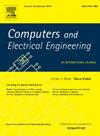深度学习模型的安全性:系统回顾
IF 4
3区 计算机科学
Q1 COMPUTER SCIENCE, HARDWARE & ARCHITECTURE
引用次数: 0
摘要
深度学习模型及其生成的数字记录显著提高了它们在许多实际应用中的采用率。虽然深度学习在多媒体应用(尤其是图像)方面的成功有助于解决一些最具挑战性的问题,但其侵犯版权的问题之一--所有权冲突--对许多潜在应用构成了严重威胁。许多针对此类模型的知识产权保护工作都提出了验证所有权的建议。因此,有必要对深度学习模型的安全性进行全面研究,以评估其强大的背景、最先进的解决方案、可能的攻击、当前的局限性和显著的改进。本研究试图通过水印、加密和指纹识别等方法,系统地讨论和总结近期针对深度学习模型的先进安全解决方案。我们的研究探讨了有关深度学习的最新应用、可能的攻击、当前的局限性和值得注意的建议。它还详细全面地评估了最近的研究差距和机遇,以增强研究人员和从业人员为深度学习模型提供更多安全解决方案的能力。这项广泛的调查是首次通过几种著名的技术来考虑模型的安全性。本文章由计算机程序翻译,如有差异,请以英文原文为准。
Deep learning models security: A systematic review
Deep learning models and the digital records they generate have remarkably increased their adoption of many practical applications. While the success of deep learning in multimedia applications, especially images, helps tackle some of the most challenging problems, one of its copyright violations, ownership conflict, poses a grave concern for many potential applications. Many works on intellectual property protection for such models have proposed to verify ownership. Therefore, it is necessary to conduct a comprehensive study on the security of deep learning models to evaluate their strong background, state-of-the-art solutions, possible attacks, current limitations and notable improvements. This survey attempts to systematically discuss and summarise the recent advanced security solutions for deep learning models through watermarking, encryption and fingerprinting. Our study explores the recent applications, possible attacks, current limitations and notable suggestions regarding deep learning. It also comprehensively evaluates the recent research gaps and opportunities in detail to empower researchers and practitioners to provide additional secure solutions for deep learning models. This extensive survey is the first to consider model security through several notable techniques.
求助全文
通过发布文献求助,成功后即可免费获取论文全文。
去求助
来源期刊

Computers & Electrical Engineering
工程技术-工程:电子与电气
CiteScore
9.20
自引率
7.00%
发文量
661
审稿时长
47 days
期刊介绍:
The impact of computers has nowhere been more revolutionary than in electrical engineering. The design, analysis, and operation of electrical and electronic systems are now dominated by computers, a transformation that has been motivated by the natural ease of interface between computers and electrical systems, and the promise of spectacular improvements in speed and efficiency.
Published since 1973, Computers & Electrical Engineering provides rapid publication of topical research into the integration of computer technology and computational techniques with electrical and electronic systems. The journal publishes papers featuring novel implementations of computers and computational techniques in areas like signal and image processing, high-performance computing, parallel processing, and communications. Special attention will be paid to papers describing innovative architectures, algorithms, and software tools.
 求助内容:
求助内容: 应助结果提醒方式:
应助结果提醒方式:


